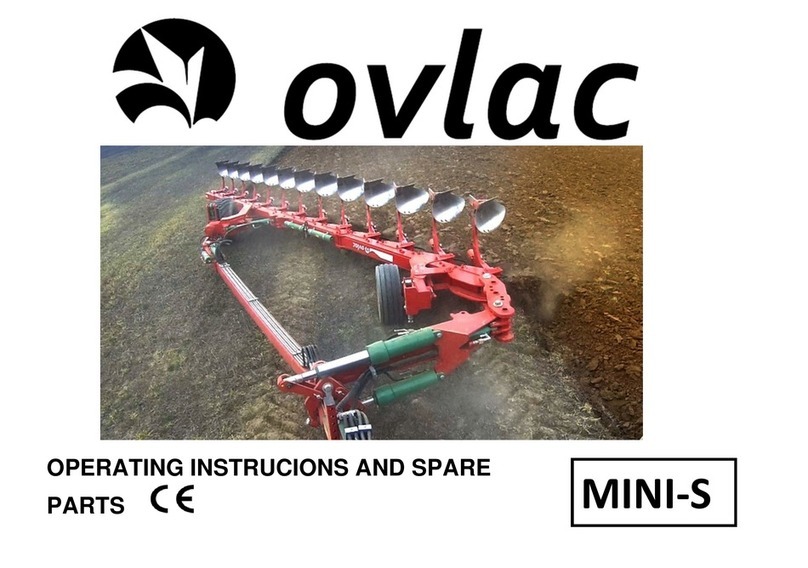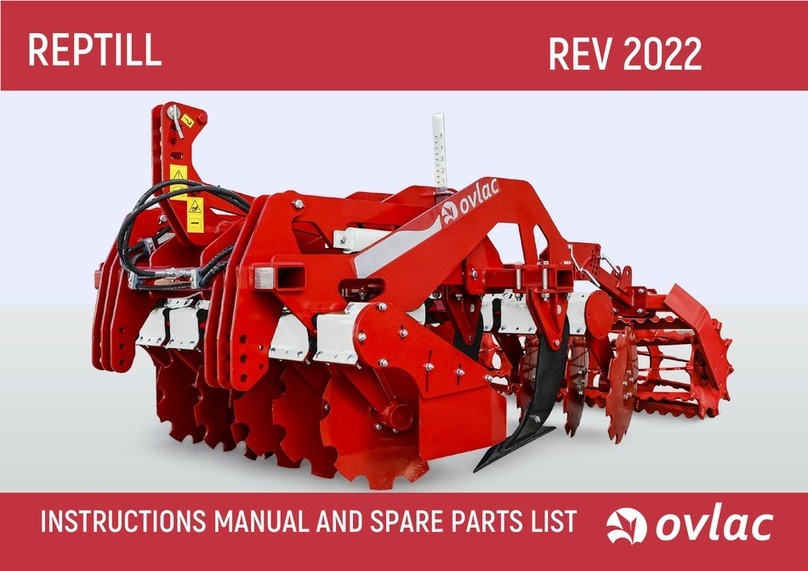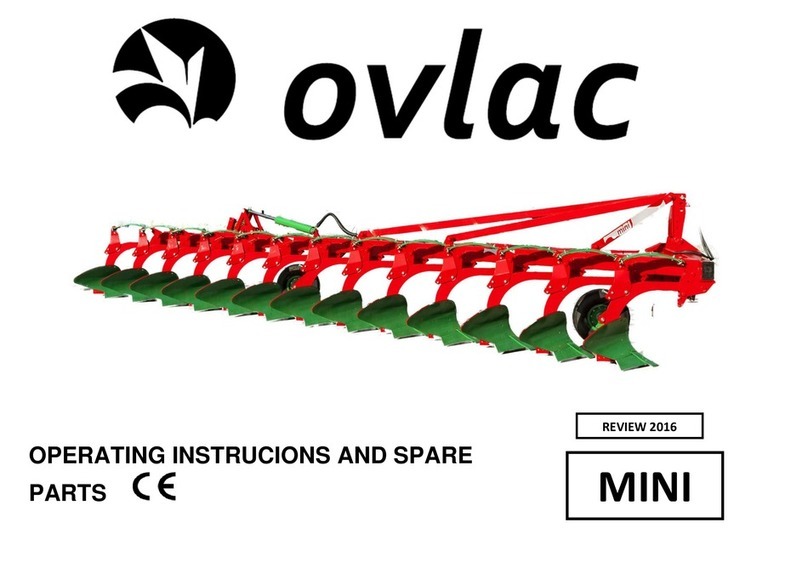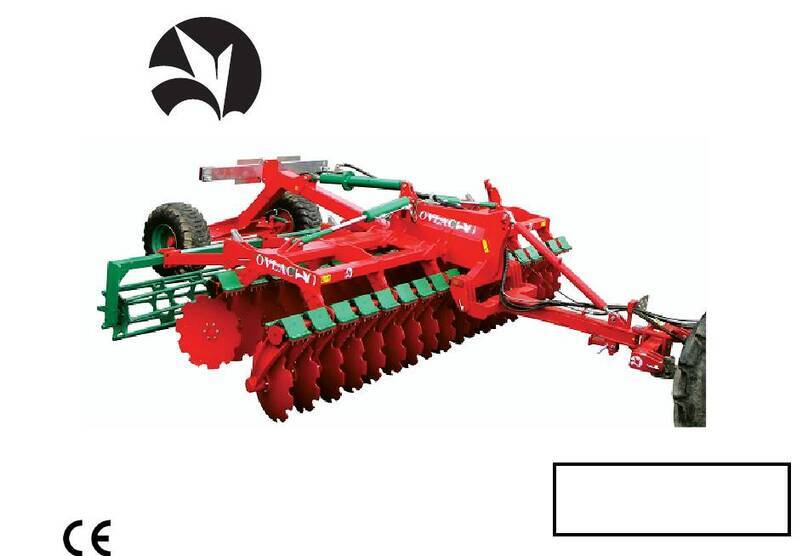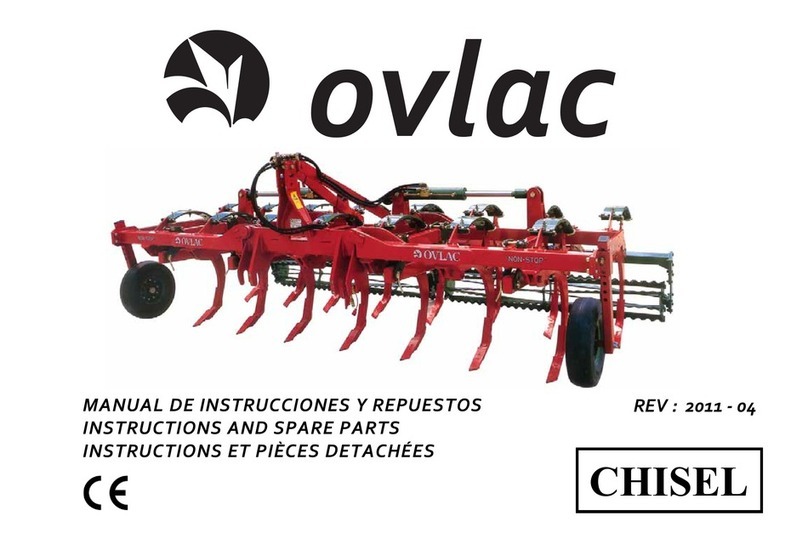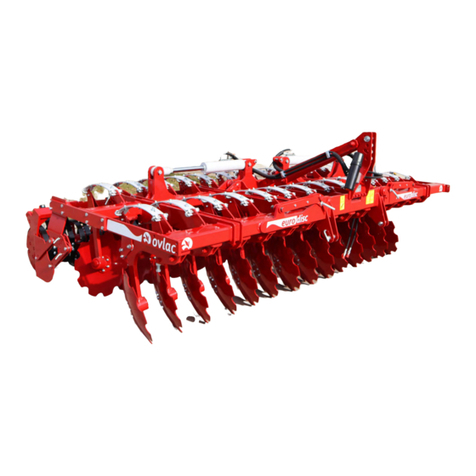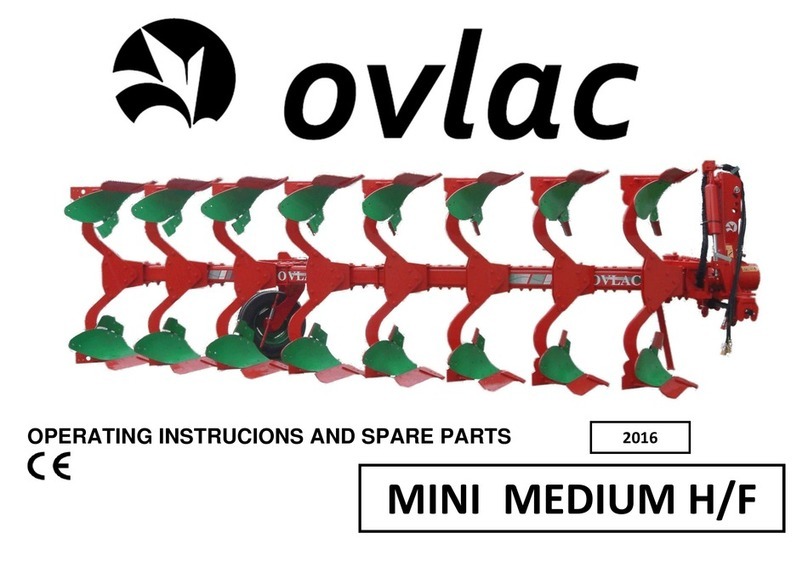
3
1. SAFETY PROVISIONS
1.-Comply with the instructions given by the danger signals exposed
in this handbook (Fig.1) and affixed to the plough itself.
2.-Operations and adjustments to the implement must always be
carried out when the engine is off and the tractor braked.
3.-It is absolutely forbidden to carry passengers or animals on the
plough.
4.-It is absolutely forbidden for persons without a driving license,
inexpert persons or those in precarious health conditions to drive the
tractor with the plough mounted.
5.-Strictly comply with all the recommended accident preventing
measures described in this handbook.
6.-Assembly of an implement on the tractor will shift the weights on
the axles.
7.-Before starting the tractor and plough, always check that all safety
devices guarding transport and use are in perfect conditions.
8.-The instructions labels affixed to the plough give useful advice on
how to prevent accidents.
9.-Always comply with the highway code in force in your country
when travelling on public roads.
10.-Comply with the maximum permissible weight on the axle of the
tractor, the total adjustable weight, transport regulations and the
highway code.
11.-
Always become familiar with the controls and their operation
before starting work.
12.-
Take the utmost care during the plough coupling and release
phases.
13.-Never ever leave the driving seat whilst the tractor is moving.
14.-
Remember that the road holding, steering and breaking capacity
may be notably influenced by the presence of a mounted implement.
15.-
It is absolutely forbidden to stand within the operative range of the
plough.
16.-
Before leaving the tractor, lower the mounted plough coupled to
the lift unit, stop the engine, engage the hand brake and remove the
ignition key from the control panel.
17.-
The category of the implement coupling pins must correspond to
that of the lift coupling.
18.-
Take care when working close to the lift links. This is a very
dangerous area.
19.-
It is absolutely forbidden to stand between the tractor and the
plough, to manoeuvre the outside lift control.
20.-
Set the control lever of the hydraulic lift to the locked position
during road transport with the plough mounted.
21.-
The spare parts must correspond to the requirements established
by the Manufacturer. Use only genuine spare parts.
22.-
The safety transfers must always be perfectly visible. They must
be kept clean and should be replaced if they become illegible.
Replacements are available on request from your local dealer.
23.-
The instruction manual must be kept for as long as the machine
lasts.






